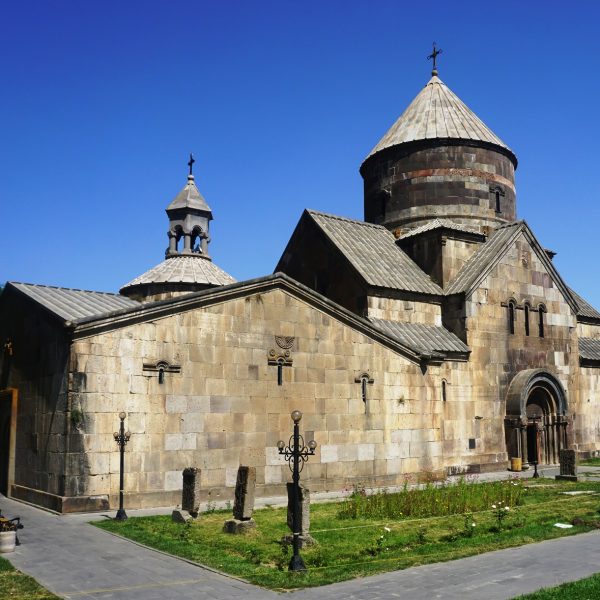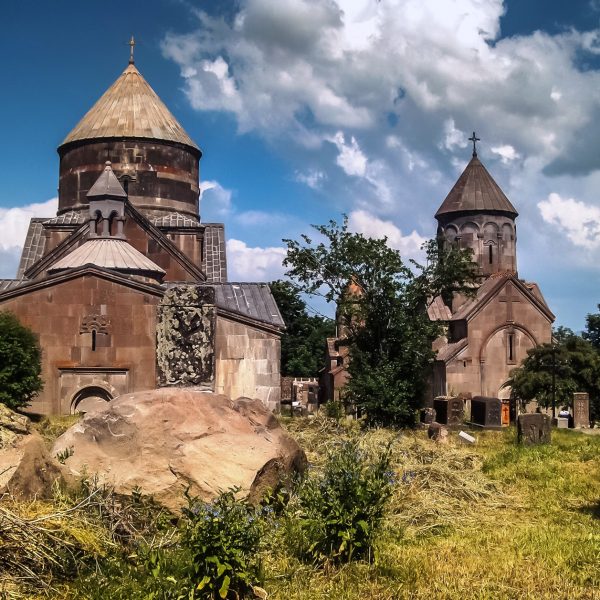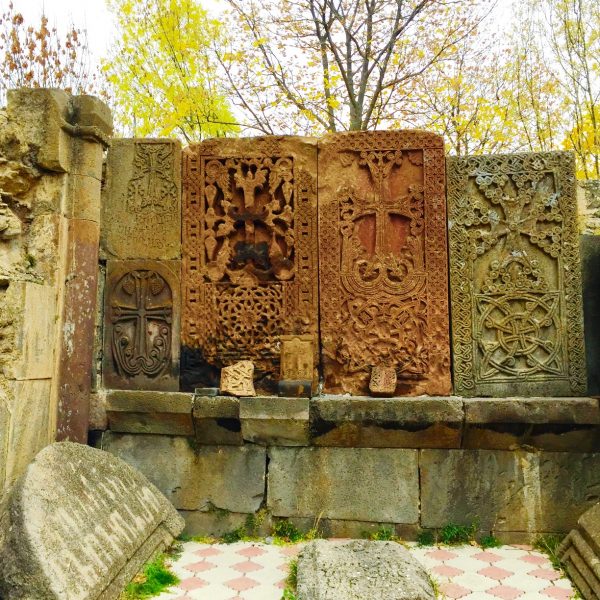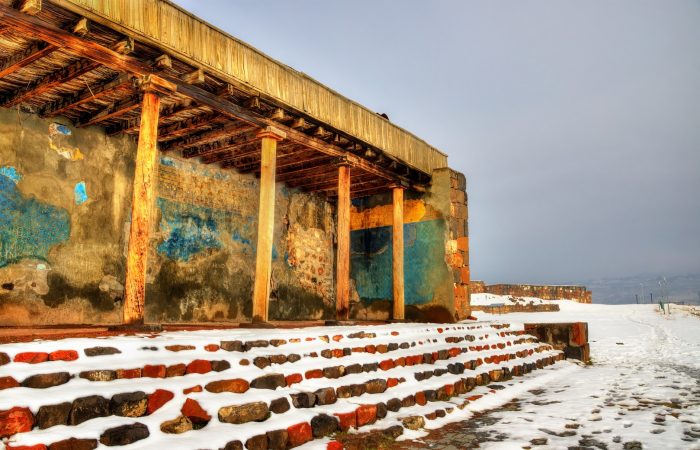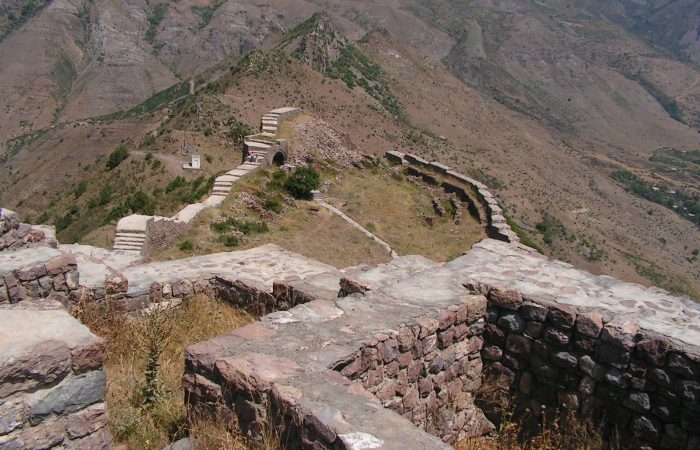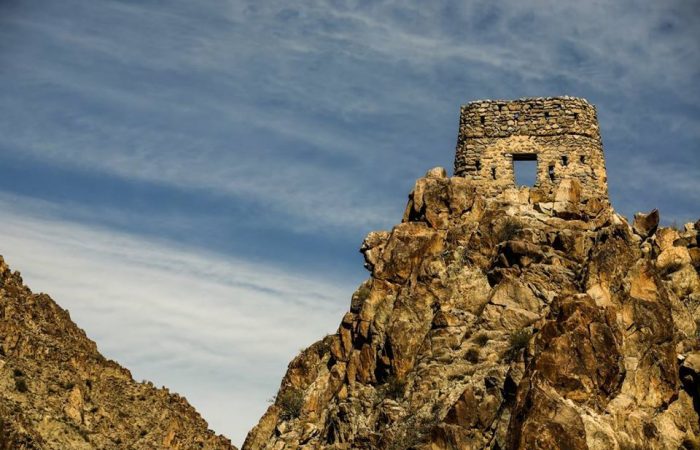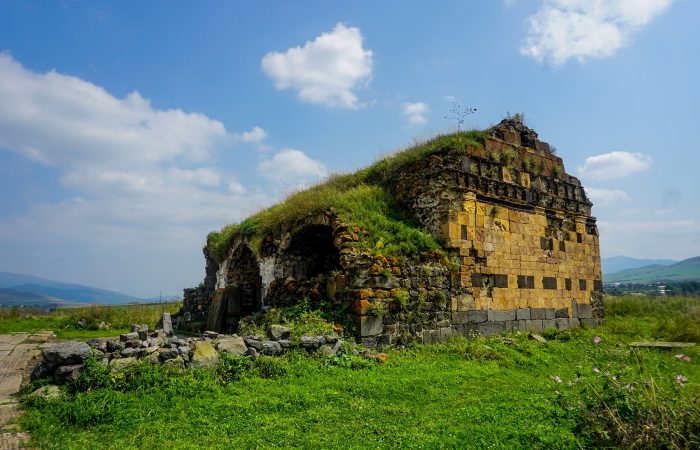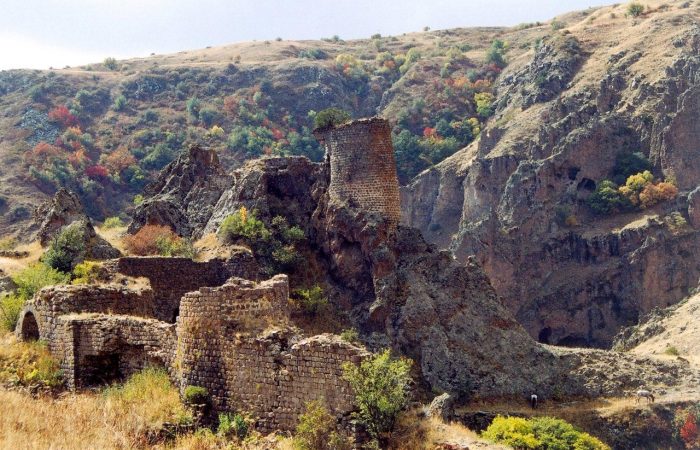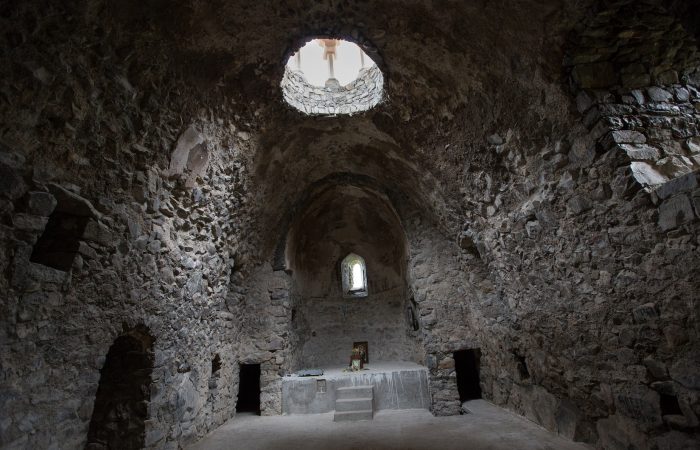Kecharis Monastery: General
Situated in the north-western part of Tsakhkadzor Kecharis monastery comprises four churches (Saint Grigor Lusavorich Church, Saint Nshan Church, Saint Astvatsatsin Church, Saint Harutyun Church), a gavit and two chapels. The complex also includes various khatchkars (cross-stones) dating to the 12th-13th centuries. In the 11th century the settlement belonged to Princes Pahlavuni who launched the construction of a monastery. The construction continued until the 13th century. The 12th century Seljuk domination caused the monastery to appear in hard conditions. In one of the manuscripts it is mentioned that “initially prosperous Kecharis became dull and lifeless.”
In 1161-1165 amirsapasalar (commander-in-chief) Zakaria released the monastery from the Seljuks. Life was again breathed into the monastery, which got new opportunities of adding new buildings to it. The monastery’s gavit was built in 1196-1206. In 1203 Vasak Khaghbakyan built the Katoghike Church the architect of which was presumably Vetsik (the latter’s khatchkar-tombstone can be found in the complex).
In 1220 the monastery’s Saint Harutyun Church was built. In 1284 Prince Prosh was buried in the monastery. In 1295 Father Superior Khachatur Kecharetsi wrote his popular “Lament” in the monastery. He also established a school in the monastery. The names of the school students were later mentioned in the manuscripts of other monasteries.
Despite the Muslim domination and invasions of the 15th-17th centuries Kecharis monastery’s spiritual and cultural life went on. In 1499 the monastery’s father superior was Pilipos and it was then that the chronicle of Mashtots was completed. Scribe Matevos mentioned the names of the monastery’s four churches in it; they were Saint Grigor Lusavorich Church, Saint Astvatsatsin Church, Saint Nshan Church and Saint Harutyun Church (Saint Astvatsatsin was the renamed Katoghike Church).
Due to the monastery’s popularity the settlement of Tsakhkadzor came to be known as Kecharis.
The monastery of Kecharis was deserted and abandoned in the 18th century. The gavit of Saint Grigor Lusavorich Church was ruined as a result of an earthquake that occurred in 1828. After Eastern Armenia was annexed to Russia in 1828, Kecharis was converted into the summer house of the employees of Yerevan state institutions. In 1843 for the purpose of public liturgy the monastery’s large gavit used to operate as a church.
In 1947-1949 the buildings of Kecharis Monastery were repaired and fenced. In 1990 the domes of Saint Katoghike and Saint Grigor Lusavorich churches were repaired. The entire monastery is made of basalt.
Kecharis Monastery Churches
Saint Grigor Lusavorich Church
Saint Grigor Lusavorich (Gregory the Illuminator) is the main church of the monastery. At the southern entrance there is an inscription stating when the church was built. According to it, the construction of the church was completed in 1033, though there is an assumption it was built in 1013 when Armenian King Gagik I Bagratuni and Catholicos Sargis I Sevantsi were still alive. Saint Grigor Lusavorich belongs to the domed hall type churches. It has modest appearance. The interior of the church includes a semicircular altar apse with two-story vestries, narrow triple windows, triangular niches and so on.
Saint Nshan Church
Saint Nshan (Sign) Church was in all likelihood erected in the 11th century, more precisely in 1051 by Grigor Magistros. It’s a small domed church with cross-wings.
Saint Astvatsatsin/Katoghike Church
Located next to Saint Nshan Church Katoghike was built by Prince Vasak Khaghbakyan in 1203-1212. The cross-winged domed church of Katoghike is the most beautiful among the monastery’s churches.
Saint Harutyun Church
According to an inscription, Saint Harutyun (Resurrection) Church was built in 1220. It’s a small and rectangular church with a small vestry in front of the entrance. The vestry comes with a vaulted ceiling. Many graves were found in the church, and therefore it’s considered to be a family burial vault.
Kecharis Monastery: Khatchkars
There are various khatchkars (cross-stones) in the territory of Kecharis Monastery. Among them the most popular one is the khatchkar-tombstone of architect Vetsik, who is thought to have built the church of Katoghike. The khatchkar-tombstone was carved by Vetsik’s architect brothers.
Lastly, Kecharis monastery was re-consecrated on July 9, 2000 by the Catholicos of All Armenians Garegin II Nersisyan.

